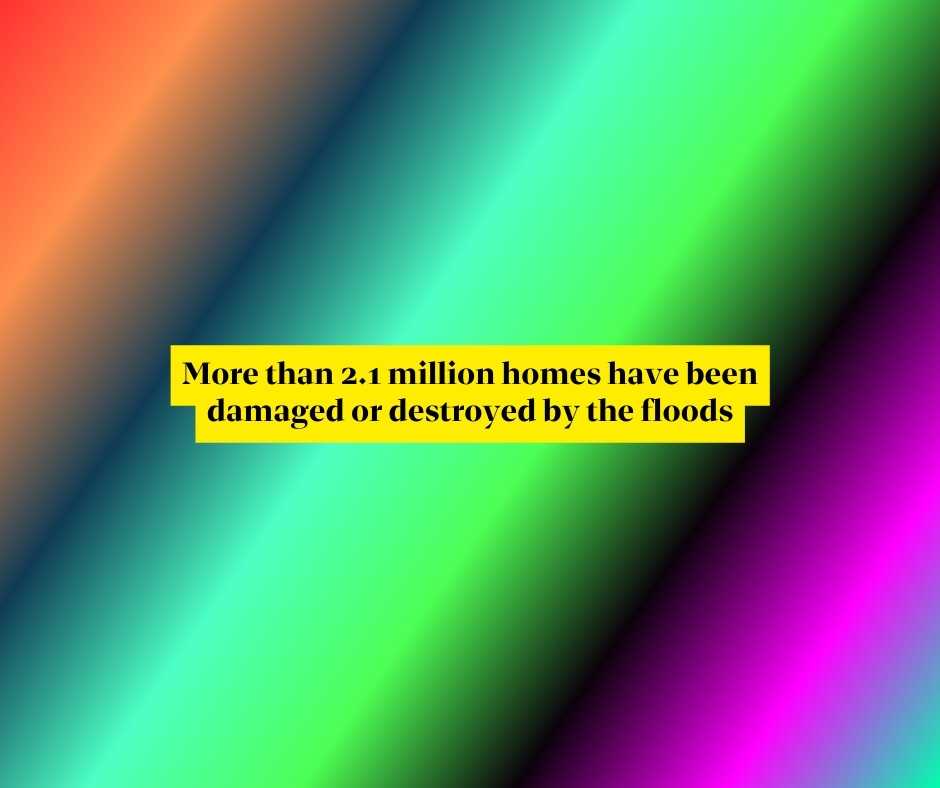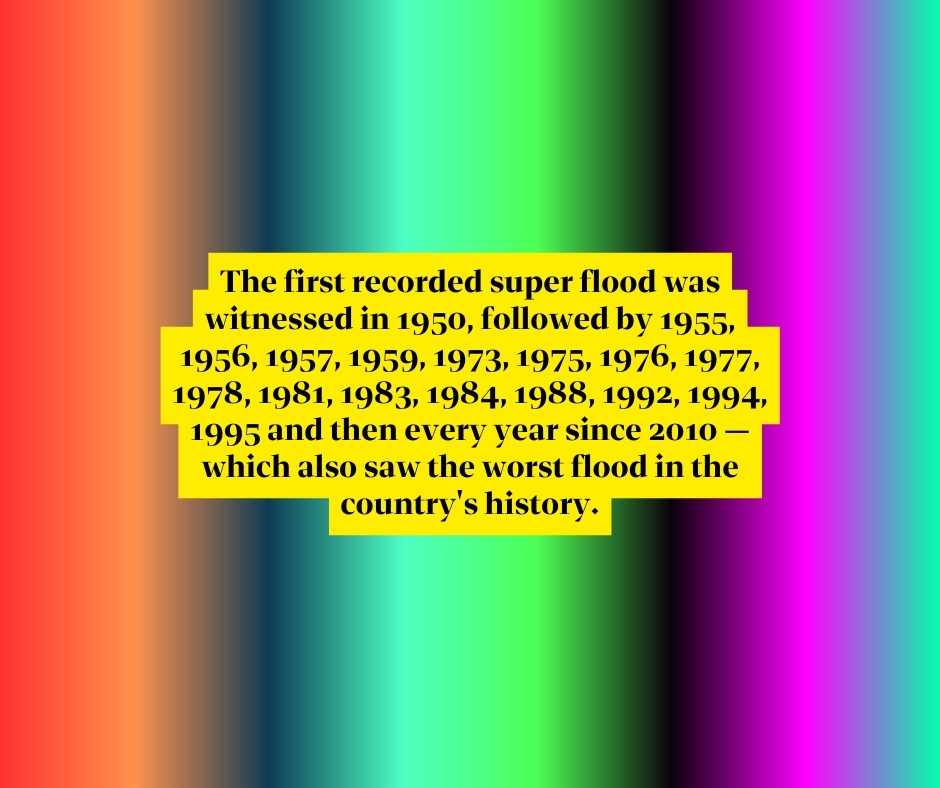The Floods in Pakistan Essay delves into the recurring natural disaster that has plagued the country for decades. These devastating floods have left a trail of destruction, impacting millions of lives and causing significant damage to infrastructure and the environment. The consequences of these floods are far-reaching, affecting agriculture, public health, and economic stability.
To address this ongoing challenge, comprehensive disaster preparedness, improved water management, and sustainable land use practices are crucial to building resilience and minimizing the impact of future floods. The essay highlights the importance of community awareness, collaborative efforts, and long-term planning to tackle the perennial issue of floods in Pakistan.
Floods in Pakistan Essay
Floods in Pakistan have been a recurring natural disaster, causing devastating consequences for communities and the economy. Pakistan is susceptible to flooding due to geographical, economic, and infrastructural factors. Over the years, these floods have claimed numerous lives, caused widespread destruction, and resulted in the loss of valuable resources and agricultural land. Understanding the underlying reasons and learning from past experiences is crucial for implementing effective flood control measures and reducing their impacts.
Geographical Reasons – Floods in Pakistan Essay
- Monsoon Season: Pakistan experiences monsoon rains during summer, usually from July to September. Heavy monsoon rainfall leads to increased river flow and saturation of soil, contributing to flooding.
- Indus River System: The Indus River and its tributaries, including the Jhelum, Chenab, Ravi, Beas, and Sutlej, play a crucial role in Pakistan’s river system. Their catchment areas cover a vast expanse of land, making floods inevitable when rainfall is excessive.
- Himalayan Glacial Melt: The melting of Himalayan glaciers during the summer further increases river flow and raises the risk of flash floods.

Economic Reasons Floods in Pakistan Essay
- Rapid Urbanization: Unplanned urban development leads to the encroachment of natural drainage systems, resulting in blocked waterways and exacerbating flood risks.
- Deforestation: Illegal logging and deforestation reduce the natural protective cover of forests, increasing soil erosion and raising the chances of floods.
- Poor Land Use Practices: Unsustainable agricultural practices, such as excessive use of fertilizers and inadequate land management, degrade the soil’s ability to absorb water, amplifying flood risks.
Poor Infrastructure Reasons – Floods in Pakistan Essay
- Poor Construction Quality: Pakistan is very unfortunate just like any other third-world country that the construction material quality and adherence to the standards is not enforced, leading to disasters.
- Corruption: Corruption is plaguing each and every institution of Pakistan and so is the case of all disaster management authorities who fail to learn from previous experiences, leading to same unpreparedness in the future, costing Billions of dollars.
- Insufficient Drainage Systems: Many urban areas need proper drainage systems, leading to waterlogging during heavy rains and exacerbating flood situations.
- Weak Flood Protection Infrastructure: Outdated or poorly maintained dams, levees, and flood protection measures fail to withstand the force of floods, leaving communities vulnerable.
Other Reasons of Floods in Pakistan Essay
In addition to the geographical, economic, and infrastructural reasons, there are other contributing factors to floods in Pakistan:
- Climate Change: Climate change is causing shifts in weather patterns, leading to more intense and erratic rainfall events. This has increased the frequency and severity of floods in the country.
- Poor Water Management: Mismanagement of water resources, such as inefficient irrigation practices and inadequate water storage facilities, can exacerbate flood situations by releasing excess water during heavy rainfall.
- Encroachment of Riverbeds: Illegal construction and encroachment on riverbeds reduce the natural flow capacity of rivers, leading to increased flood risks during high rainfall.
- Poor Disaster Preparedness: Limited awareness and preparedness among communities for flood events can hinder evacuation efforts and increase the vulnerability of populations during floods.
- Lack of Institutional Coordination: Fragmented disaster management systems and lack of coordination between different government agencies can hamper effective response and relief efforts during floods.
History of Floods in Pakistan
Pakistan has a long history of devastating floods. The 2022 floods in Pakistan left more than 10 million people without safe drinking water, causing severe acute malnutrition and waterborne diseases among children. The devastation affected 33 million people, with over 1,700 lives lost and 2.2 million houses damaged. Malnutrition, water contamination, and poor sanitation are ongoing challenges. Immediate efforts must provide safe water, sanitation, and healthcare. Long-term solutions should focus on flood mitigation, disaster preparedness, and climate change adaptation. International cooperation is essential. Together, we can build resilience and ensure a brighter future for Pakistan.
In recent memory, significant floods occurred in 2010, 2011, 2014, and 2022, affecting millions and causing extensive damage to property and infrastructure. These floods highlighted the urgent need for better flood management and mitigation strategies. The long-term consequences of flooding in Pakistan are far-reaching. The damage to infrastructure, including roads, bridges, and schools, hampers economic growth and development in affected regions. The disruption to livelihoods and businesses can lead to increased poverty and unemployment, leaving communities struggling to recover for years to come. Moreover, the environmental impact of flooding is substantial, with soil erosion, loss of biodiversity, and degradation of natural ecosystems affecting the country’s ecological balance.

Lessons to Learn from this Floods in Pakistan Essay
- Early Warning Systems: The importance of establishing robust early warning systems cannot be overstated. Timely alerts can save lives and allow communities to take necessary precautions.
- Preparedness and Resilience: Investing in disaster preparedness and building resilient infrastructure can minimize the impact of floods on communities and the economy.
- Climate Change Adaptation: Climate change exacerbates extreme weather events, including floods. Addressing climate change through sustainable policies and practices is crucial for reducing future flood risks.
- Importance of ICT deployment in Flood Mitigation and education: It is essential to educate people about the changing weather conditions with real-time information. It is not those old days of radio, people use internet and other devices that government can utilize to at least announce live warning and updates.
- Better Civil Engineering Intelligence: It is essential to enforce the Civil Engineering laws in the country that require the dealing of civil engineering infrastructure in a way prescribed by the Civil Engineering community. Civil engineering is not all about the race of top 10 malls in Islamabad, but it is way beyond this race, it is about saving and impacting lives.
Flood Control and Mitigation Strategies
- Reforestation: Promoting afforestation and reforestation efforts can help restore natural protective cover, reduce soil erosion, and increase water absorption capacity.
- Sustainable Land Use: Encouraging sustainable agricultural practices and promoting urban planning that considers natural drainage systems can reduce the risk of flooding.
- Improved Infrastructure: Upgrading and maintaining flood protection infrastructure, including dams and levees, can enhance their ability to withstand floods.
- Integrated Water Management: Implementing integrated water management practices can help regulate river flows and manage water resources effectively.
- Disaster Response and Relief: Enhancing disaster response and relief mechanisms can aid affected communities during floods and facilitate recovery efforts.
- Climate Change Adaptation: Implementing climate change adaptation strategies, such as investing in flood-resistant infrastructure and promoting sustainable agriculture, can help communities cope with changing weather patterns.
- Integrated Watershed Management: Managing watersheds holistically can regulate river flows, reduce soil erosion, and enhance water retention, contributing to flood control.
- Public Awareness and Education: Conducting awareness campaigns and educating communities about flood risks, early warning systems, and evacuation procedures can improve preparedness and response during flood events.
- Strengthening Disaster Management Institutions: Enhancing coordination and capacity-building among disaster management institutions can improve disaster response and relief efforts.
- International Cooperation: Given the region’s transboundary nature of river systems, cooperation with neighboring countries on water management is essential to mitigate flood risks.
Conclusion
Floods in Pakistan pose significant challenges due to geographical, economic, and infrastructural factors. Understanding the reasons behind these floods and learning from past experiences is crucial for devising effective strategies to control and mitigate their impacts. Sustainable land use practices, robust early warning systems, and improved flood protection infrastructure are essential for reducing the wastage of resources, lands, and lives caused by these devastating natural disasters. By adopting comprehensive flood management measures, Pakistan can minimize the risks and build resilience against future flooding events.


